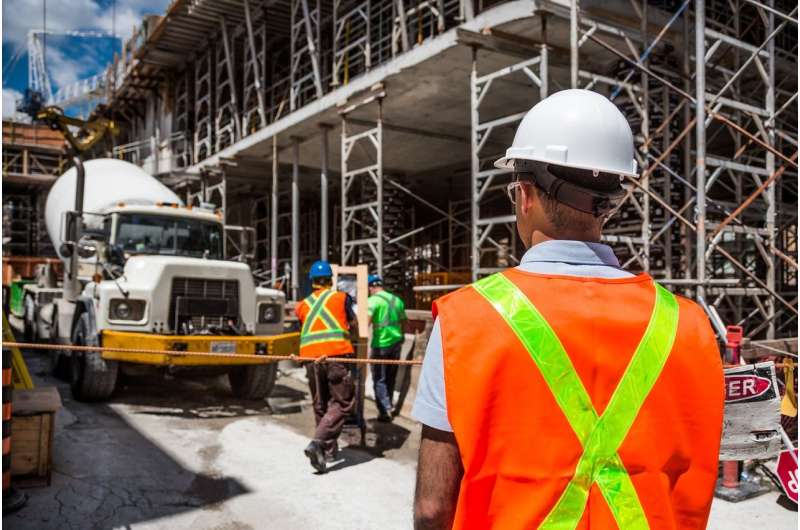This article has been reviewed according to Science X's editorial process and policies. Editors have highlighted the following attributes while ensuring the content's credibility:
fact-checked
trusted source
proofread
Aotearoa's work-related deaths: The real cost

Work contributes to at least a quarter of all fatal injuries in Aotearoa (New Zealand)—substantially more than what official records show, University of Otago-led research reveals.
The research set out to determine the societal burden of fatal work-related incidents in Aotearoa by including bystanders and commuters.
Lead author Dr. Rebbecca Lilley, of Otago's Injury Prevention Research Unit, says work poses increased risk of injury not only for workers but also for the public, yet the broader impact of work-related injuries has never been quantified.
"Every death produces a ripple of emotional and financial harm across whānau (family), communities and society. Loss of whānau in such preventable circumstances is hard to accept and many whānau hope that their loved one's death results in learnings to prevent similar deaths from occurring," she says.
"We have long known official work fatality data dramatically undercount the true burden of work to fatal injury in New Zealand. This study conservatively estimates that we don't even count half the fatal injuries that occur due to work," she says.
"When our official data understate the scale of the issue society suffers. If we are to achieve a substantive reduction in work-related fatal injury it is time to recognize and count the broader societal burden of work fatalities and respond to them adequately."
In total, 7,707 coronial records from 2005 to 2014 were reviewed, of which 1,884 (24%) were identified as work-related. Of those 1,884, almost half occurred among non-working bystanders and commuters. Of all the total fatal injuries for that time, those due to machinery (97%) and due to being struck by another object (69%) were work-related.
"When utilizing a more inclusive definition of work-relatedness the contribution of work to be our study finds that work conservatively contributes to a quarter of all fatal injuries in New Zealand, and of these, non-working bystanders contribute to over a third of these deaths," Dr. Lilley says.
"This makes work-related risks and hazards, even amongst non-working bystanders, a substantial, yet under-recognized cause of injury and a joint workplace and public health challenge."
Non-working bystanders were mainly killed in work-related transport events (87 percent), with head-on traffic collisions involving a work vehicle the most common scenario. About one in three of all transport deaths were attributed to work.
Of all the fatal injury in New Zealand for the decade, an estimated 86,682 years of life were lost to work related deaths. A total of 54% of those occurred in non-workers.
Dr. Lilley says the study—the first of its kind for Aotearoa—shows that the contribution of work to the broader societal burden of fatal injury is substantial.
The research team is calling for the adoption of more socially inclusive estimates of work-related fatal injuries to inform evidence-based policies and actions.
"The traditional conceptualization of work-relatedness misses important opportunities to monitor trends and inform actions and public policy from a broader societal perspective. It is also important for all stakeholders, including the public, to understand the true scale of work-related information and have this information to inform effective control of these risks.
"The advantage of calculating workplace injuries like this is that is gives an indication of the broader societal impact of work and economic activity on injury, with estimates not reliant on notifications to WorkSafe or on compensation claims made to the Accident Compensation Corporation (ACC)—both of which are well recognized as being prone to under-reporting."
More information: Rebbecca Lilley et al, Societal burden of work on injury deaths in New Zealand, 2005–14: An observational study, SSM—Population Health (2023). DOI: 10.1016/j.ssmph.2023.101353


















